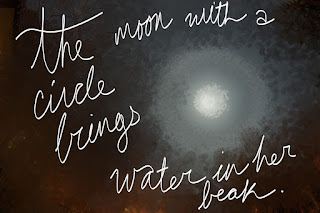The Full Moon and Farming
The
cyclic nature of the moon affects many of the cycles that occur on Earth’s
surface. Like the tides that come and go according to the pull of the moon on
Earth’s gravity, our moon can affect our food sources. Farmers have long held
beliefs about the way that the moon can affect their yields, and the traditions
of adhering to these beliefs has resulted in more modern beliefs that consuming food according to the
lunar cycle is
not only traditional, but also has some health benefits.
The
Harvest Moon is probably the most familiar part of the lunar cycle. This annual
occurrence has significance in nearly every culture. In the American Midwest,
it is sometimes referred to as the “Corn Moon” if it occurs in September; it is
the full moon that most closely coincides with the autumn equinox. This full
moon allows for more light during the harvest of grains that can be stored in
the winter. The light of the harvest moon allows the day of harvesting to last
well into the night since it rises nearly an hour later than usual and is much
brighter, according to most legends. When the harvest moon falls in October, it
can replace the Hunter’s Moon. This moon is believed to provide more light for
hunters to find meat in preparation for the winter, as well as allow them to
see predators that could be lurking in the night.
Farming
itself depends on the full moon in a great deal of folklore. While Lunar Farming has grown in popularity over the last couple of
decades, it is likely the oldest calendar used for farming, since it relies
completely on the lunar cycles. Many of the lunar farming guides adhere to the folklore that planting types of
vegetables according to the moon cycle will determine the success of the crop. The Summit County Farm Bureau says that the best time to
plant vegetables that bear crops above the ground, like corn, should be planted
in the light of the moon, either waxing or full, in order to achieve a peak
yield. This can be tricky, however, since planting too early could result in a
frost overtaking the crop, and planting too late could result in yields that are
not ready for harvest, since the first full moon in Spring has a 28 day
variance. Nevertheless, folklore provides a remedy to determine this as well.
Local Harvest says that the folklore that informs when to plant is determined
by the type of plant and the phase of the moon:
Once the Moon quakes with its First
Quarter through the Full Moon phase you can plant above ground crops with
inside seeds. In this quarter the gravitational pull is less, but the moonlight
is strong, creating strong leaf growth. It is generally a good time for
planting, especially two days before the full moon. Examples of these plants
are beans, melons, peas, peppers, squash, and tomatoes.
Strong
leaf growth means that the plant will produce edible food, since the leaves are
the method in which plants take in their own food. Crops that produce below
ground do not have to rely on leaves for nutrition as much, so they are planted
on the last day of the full moon.

Comments
Post a Comment